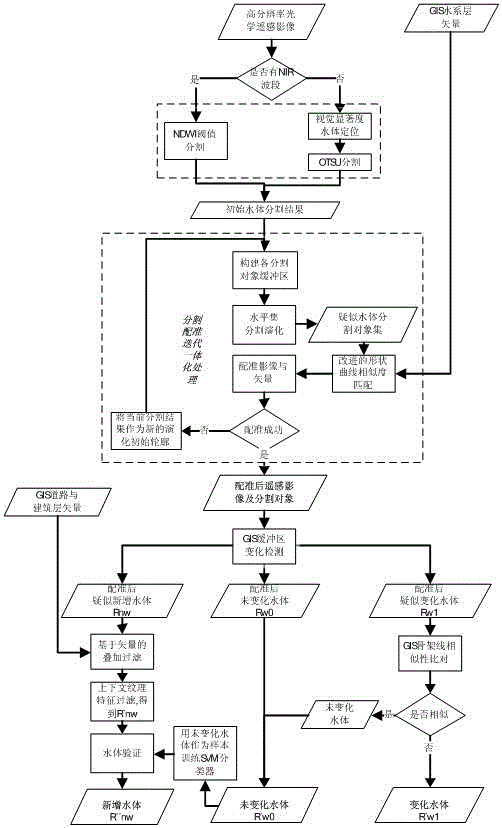Integrated optical remote sensing image and gis automatic registration and water body extraction method
An optical remote sensing and automatic registration technology, applied in image analysis, image data processing, instruments, etc., can solve the problems of low automation, poor universality, and manual intervention of extraction algorithms
- Summary
- Abstract
- Description
- Claims
- Application Information
AI Technical Summary
Problems solved by technology
Method used
Image
Examples
Embodiment Construction
[0057]By analyzing the spectrum, texture, shape, context and other characteristics of the water body on the image and the change law of the water body, it can be known that the water body has significant visual features on the remote sensing image and is easy to identify; secondly, the water body has constant stability, that is, the water body generally does not disappear , even if affected by seasonality, the range and contour will change to some extent. Based on these characteristics, we propose a fully automatic water extraction method assisted by GIS vectors. Its core idea is the integration of segmentation, registration, change detection and extraction. Through the level set iterative evolution segmentation method and the improved shape curve similarity method, the automatic registration of water body remote sensing images and GIS is realized, and the results of registration and water body segmentation are obtained at the same time. , the successfully registered water bod...
PUM
 Login to View More
Login to View More Abstract
Description
Claims
Application Information
 Login to View More
Login to View More - R&D
- Intellectual Property
- Life Sciences
- Materials
- Tech Scout
- Unparalleled Data Quality
- Higher Quality Content
- 60% Fewer Hallucinations
Browse by: Latest US Patents, China's latest patents, Technical Efficacy Thesaurus, Application Domain, Technology Topic, Popular Technical Reports.
© 2025 PatSnap. All rights reserved.Legal|Privacy policy|Modern Slavery Act Transparency Statement|Sitemap|About US| Contact US: help@patsnap.com



